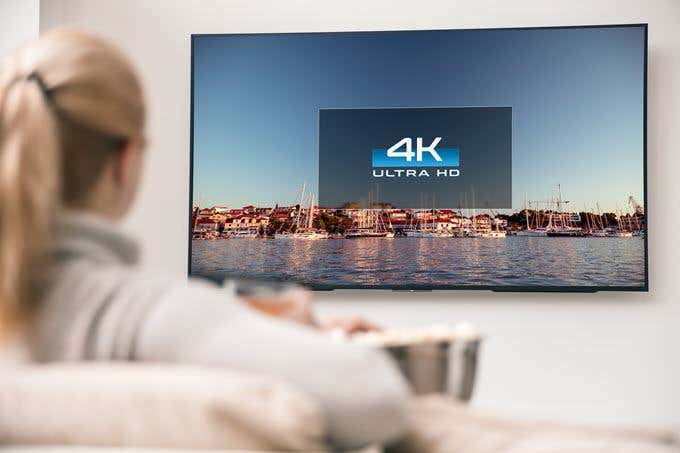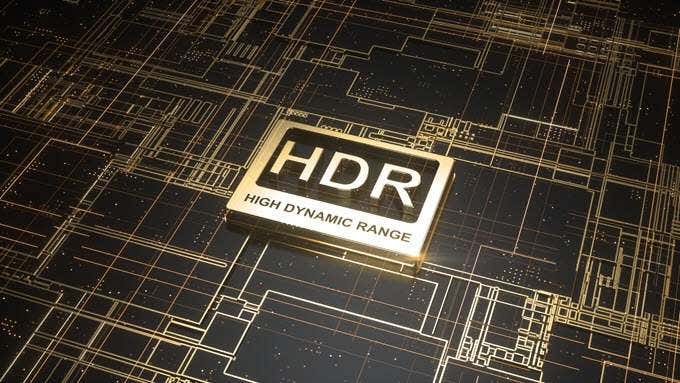Browsing through the TV aisle, you notice the wide variety of acronyms used in their descriptions. Ultra HD, UHD, 2160p, 4K x 2K, 4K Ultra High Definition, Quad High Definition, Quad Resolution, Quad Full High Definition, QFHD, UD, HDR…the list goes on. Is the extra money worth the hype?
4K/UHD has four times the number of pixels as 1080p, so it must be better, right? Not exactly. You may only see the change in quality if you’re at a close viewing distance or if the movie or image is native 4K content.

4K can’t improve any image under native 4K, so anything less than 4K will show no improvement. HDR (high dynamic range) doesn’t focus on adding more pixels like its 4K counterpart, but instead creates better, more dynamic pixels by boosting contrast and brightness and providing a wider range of colors.
Misdirection
A common pitch for some manufacturers who haven’t achieved the actual “HDR experience” have misdirected customers by using the phrase “HDR-capable”, or “HDR-compatible.” Although it has HDR in the name, it doesn’t mean that it can produce the same high quality, colorful HDR image. These TV’s can only read HDR metadata, which is the data encoded into the signal that tells the TV how the image is to be shown.
A big challenge for these TVs is the brightness. Top brand televisions with HDR can hit 500-1,000 nits (the unit of measurement for brightness). HDR-capable TVs support 100-300 nits, the result of which is a much more limited range of color.

There are basically two types of HDR technology currently. HDR10 has been adopted as the baseline standard for almost every TV with HDR. If you have an Ultra HD Blu-ray player, then this is the only format supported. Your other choice is an enhanced version of HDR10, known as Dolby Vision.
What Is Dolby Vision?
Dolby, the company that’s also known for Dolby Surround, has created a brand name for HDR 4K known as Dolby Vision. Manufacturers must have their equipment tested and pay to get their products certified to have the Dolby Vision logo put on their devices. The Dolby HDR format is also widely used in the professional film industry.

Dolby Vision lays out more specific instructions for compatibility. Dolby even has separate instructions for encoding and decoding Dolby Vision HDR material on specific movie productions, broadcast TV, and TV displays. This makes it much more technologically demanding than HDR10.
So HDR10 or Dolby Vision?
Dolby Vision TVs should produce an even better visual experience, but with that being said, not all TVs are created equal. These TVs provide for metadata that can change scene to scene, instructing the TV to push contrast or boost certain colors. Dolby Vision can perform up to 12-bit color depth for a possible 68 billion colors on the brightness scale, reaching up to 4,000 nits or more.
HDR10 uses a fixed set of metadata, giving less flexibility on the way your TV can produce different movies and scenes. HDR10 is also limited to 10-bit color depth for up to 1.07 billion colors. It can lack in its brightness levels when comparing it to Dolby Vision TVs, only allowing for 1,000 nits or more.

Now, Dolby Vision seems like the logical winner, right? Well, as of now, no consumer TVs are even capable of a 12-bit color depth. Dolby Visions range is hopefully a foreshadowing of future products.
Even on brightness requirements, both Dolby and HDR10 formats can be skewed. An example of this is OLED sets which can’t reach the brightness levels of LCD but can offer a superior experience when concerning lower light levels. However, both TVs qualify as HDR10 and Dolby vision compatible sets.
Get to The Point!
So, Whether you wanted the knowledge and specifics over these two types of TVs, or you just scrolled to the bottom to get the simple answer, we have bad news for you: there is no simple answer. The answer is determined by your situation.
If you have a designated room with low lighting and an HDR-capable device, and you’re somewhat close to your TV, then HDR is for you. On the flip side, if you only watch cable and haven’t spent that extra penny on an HDR machine, 4K will do just fine.